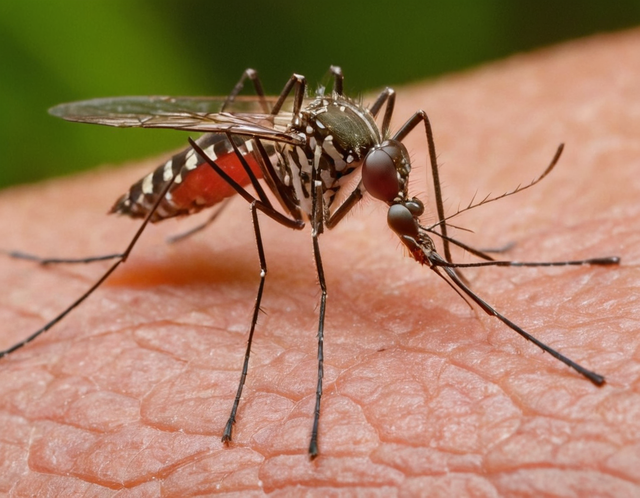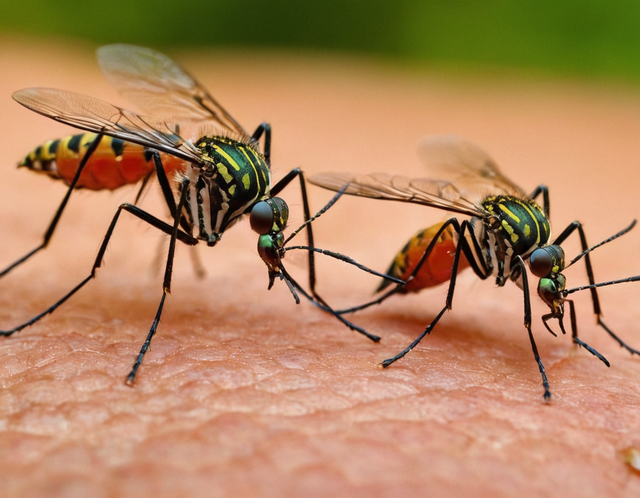Introduction
The world of virology is constantly evolving. As scientists uncover new information about viruses, our understanding of these pathogens becomes more nuanced and sophisticated. One significant aspect of this evolution is the naming of viruses. Historically, the names of viruses have been derived from a variety of sources, including the locations where they were first identified, the diseases they cause, and even the scientists who discovered them. However, there has been a growing movement within the scientific community to reform how viruses are named. This article delves into the reasons behind this movement, with a particular focus on the dengue virus, and explores the broader implications of renaming viruses.
.png)
The History of Virus Naming
Early Practices
In the early days of virology, naming conventions were often informal and inconsistent. Viruses were frequently named after the location of their discovery. For instance, the Ebola virus was named after the Ebola River in Congo, where it was first identified. Similarly, the West Nile virus was named after the West Nile district of Uganda. These names provided a simple method for identifying and referring to new viruses.
.png)
Disease-Based Names
Another common practice was to name viruses after the diseases they cause. The hepatitis viruses, for example, are named for the liver inflammation (hepatitis) they cause. Influenza viruses are named for the flu-like symptoms they produce. This approach has the advantage of directly linking the virus to its clinical manifestations, making it easier for both scientists and the public to understand the nature of the pathogen.
.png)
Honoring Discoverers
In some cases, viruses were named in honor of the scientists who discovered them. The Epstein-Barr virus, for instance, is named after Michael Epstein and Yvonne Barr, who first identified the virus. This practice served as a way to recognize the contributions of pioneering researchers in the field of virology.

Problems with Traditional Naming Conventions
Stigmatization and Geopolitical Issues
One of the major criticisms of traditional virus naming conventions is that they can lead to stigmatization and geopolitical issues. Naming a virus after a specific location can unfairly associate that place with negative connotations. For example, the "Spanish flu" of 1918, despite its name, did not originate in Spain. The name arose because Spain was one of the few countries that did not censor reports of the outbreak, leading to the mistaken belief that the virus originated there. This has led to calls for more neutral and non-stigmatizing names for viruses.

Inaccurate and Misleading Names
Disease-based names can sometimes be misleading or overly simplistic. For instance, hepatitis viruses include several different viruses (Hepatitis A, B, C, D, and E), each with distinct characteristics and modes of transmission. Grouping them all under the term "hepatitis" can obscure important differences between these viruses. Similarly, the name "influenza" encompasses a wide range of viruses with varying degrees of severity and transmissibility.

Lack of Scientific Precision
Traditional naming conventions often lack the scientific precision needed for accurate classification and study. As our understanding of viruses has grown, it has become clear that more systematic and descriptive naming conventions are necessary to reflect the genetic and biological diversity of viruses. This is particularly important for tracking the evolution and spread of viruses, as well as for developing targeted treatments and vaccines.

The Case of Dengue Virus
Overview of Dengue Virus
Dengue virus is a mosquito-borne virus that causes dengue fever, a disease characterized by high fever, severe headache, pain behind the eyes, joint and muscle pain, rash, and mild bleeding. Severe cases can lead to dengue hemorrhagic fever or dengue shock syndrome, which can be fatal if not treated promptly. Dengue virus is transmitted primarily by Aedes mosquitoes, particularly Aedes aegypti and Aedes albopictus. It is endemic in many tropical and subtropical regions around the world, putting billions of people at risk.

Current Naming Convention
Dengue virus is currently classified into four distinct serotypes: DENV-1, DENV-2, DENV-3, and DENV-4. Each serotype is genetically different and can cause varying degrees of illness. Infection with one serotype provides lifelong immunity against that serotype but not against the others. This means that individuals can be infected with dengue multiple times, each time by a different serotype.

Issues with the Current Naming System
While the current naming system for dengue virus serotypes is relatively straightforward, it does have some limitations. The use of numerical designations (DENV-1, DENV-2, etc.) does not convey any information about the genetic differences or evolutionary relationships between the serotypes. Additionally, as more strains and variants of dengue virus are identified, the numerical system may become increasingly unwieldy and insufficient for accurately capturing the diversity of the virus.
The Movement to Rename Viruses
Goals of Renaming
The movement to rename viruses aims to create a more systematic and scientifically accurate framework for virus nomenclature. This involves developing names that reflect the genetic and biological characteristics of viruses, rather than their geographic origins or the diseases they cause. The goals of this effort include reducing stigmatization, improving scientific communication, and enhancing our ability to track and study viruses.
The International Committee on Taxonomy of Viruses (ICTV)
The International Committee on Taxonomy of Viruses (ICTV) plays a central role in the renaming process. The ICTV is responsible for developing and maintaining a standardized system for the classification and naming of viruses. The committee works to ensure that virus names are scientifically accurate, consistent, and universally accepted.
Principles of the New Naming System
The new naming system proposed by the ICTV is based on several key principles:
Genetic and Biological Characteristics: Names should reflect the genetic and biological properties of the virus, including its evolutionary relationships with other viruses.
Neutrality: Names should be neutral and avoid geographic, cultural, or political references to minimize stigmatization and bias.
Clarity and Consistency: Names should be clear, consistent, and easily understood by both scientists and the public.
Flexibility: The naming system should be flexible enough to accommodate new discoveries and changes in our understanding of viruses.
The Process of Renaming Dengue Virus
Identifying Genetic Variability
One of the first steps in renaming dengue virus involves a comprehensive analysis of its genetic variability. This includes sequencing the genomes of different dengue virus strains and identifying the genetic markers that distinguish them. By understanding the genetic diversity of dengue virus, scientists can develop a more precise and informative naming system.
Developing a Phylogenetic Framework
A phylogenetic framework is essential for the new naming system. This involves constructing a phylogenetic tree that depicts the evolutionary relationships between different dengue virus strains. By mapping out these relationships, scientists can create names that reflect the genetic lineage and evolutionary history of the virus.
Proposing New Names
Based on the genetic and phylogenetic analysis, scientists can propose new names for dengue virus strains. These names will be designed to convey important information about the genetic characteristics and evolutionary relationships of the virus. The proposed names will be reviewed and approved by the ICTV to ensure they meet the established principles and guidelines.
Implementing the New Naming System
Once the new names are approved, they will be implemented in scientific literature, databases, and public health communications. This will involve updating existing records and ensuring that the new names are used consistently across different platforms. Public education and outreach efforts will also be important to help the scientific community and the general public understand and adopt the new naming system.
Broader Implications and Challenges
Benefits of the New Naming System
The new naming system for viruses, including dengue virus, has several significant benefits:
Improved Scientific Communication: By using names that accurately reflect the genetic and biological characteristics of viruses, scientists can communicate more effectively about their research and findings.
Enhanced Public Health Response: Clear and consistent names can help public health officials track and respond to virus outbreaks more effectively, improving disease surveillance and control efforts.
Reduced Stigmatization: Neutral names can help reduce the stigmatization and discrimination associated with viruses, promoting a more inclusive and respectful approach to public health.
Facilitated Research and Development: A systematic naming system can support the development of targeted treatments and vaccines by providing a clearer understanding of the genetic diversity and evolutionary history of viruses.
Challenges and Considerations
Despite the benefits, there are several challenges and considerations associated with renaming viruses:
Transition Period: Implementing a new naming system will require a transition period during which both old and new names may be in use. This can create confusion and require significant effort to update records and databases.
Acceptance and Adoption: Ensuring that the new names are widely accepted and adopted by the scientific community and the public will require extensive education and outreach efforts.
Balancing Tradition and Innovation: There may be resistance to changing long-established names, and finding a balance between tradition and innovation will be important for the success of the renaming effort.
Global Coordination: Achieving global coordination and consistency in the use of new names will be essential for the effectiveness of the new naming system.
Conclusion
Renaming viruses, including the dengue virus, represents a significant step forward in the field of virology. By adopting a more systematic and scientifically accurate naming system, we can improve our understanding and communication about viruses, enhance public health response efforts, and reduce stigmatization. The process of renaming dengue virus involves a comprehensive analysis of its genetic variability, the development of a phylogenetic framework, and the proposal and implementation of new names. While there are challenges associated with this effort, the potential benefits are substantial. As we continue to learn more about viruses and their complex interactions with humans, a clear and consistent naming system will be crucial for advancing our knowledge and improving our ability to prevent and control viral diseases